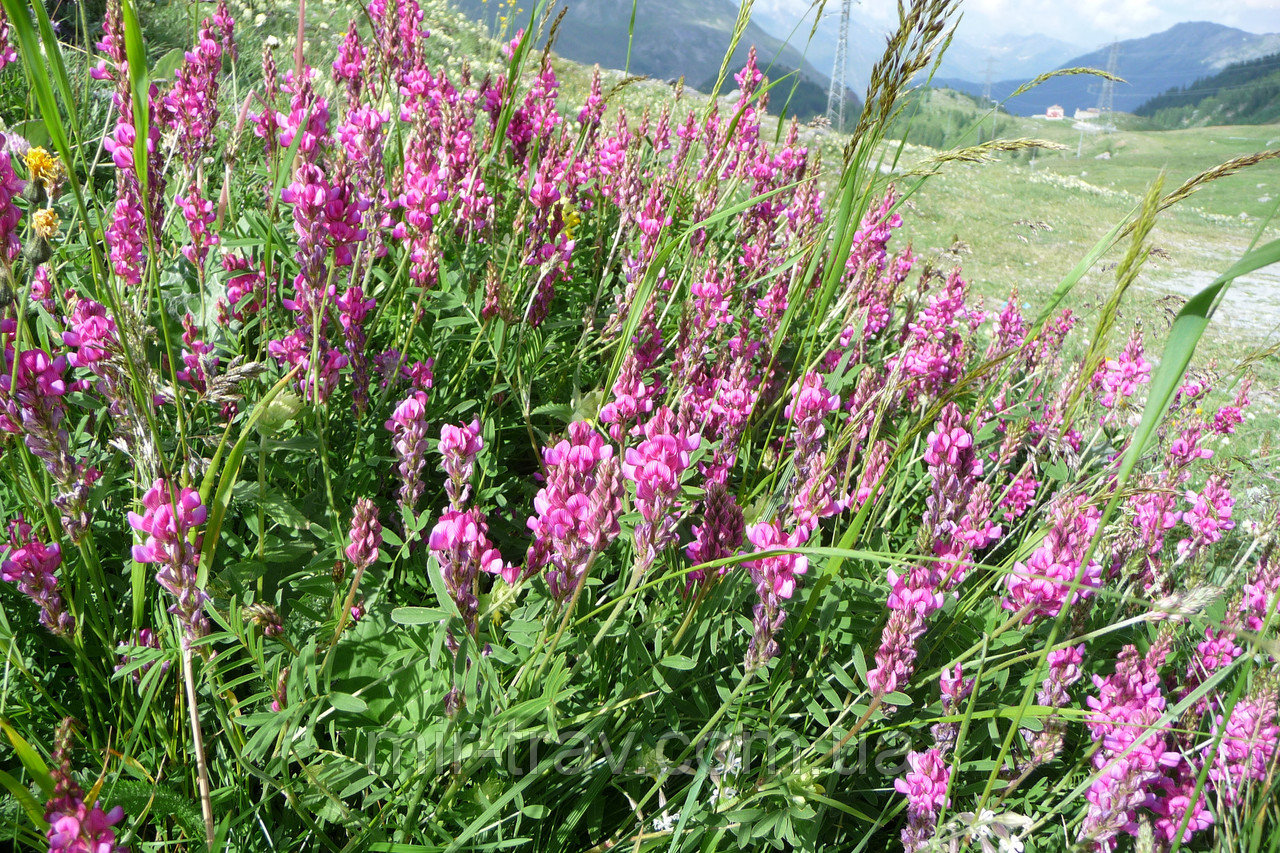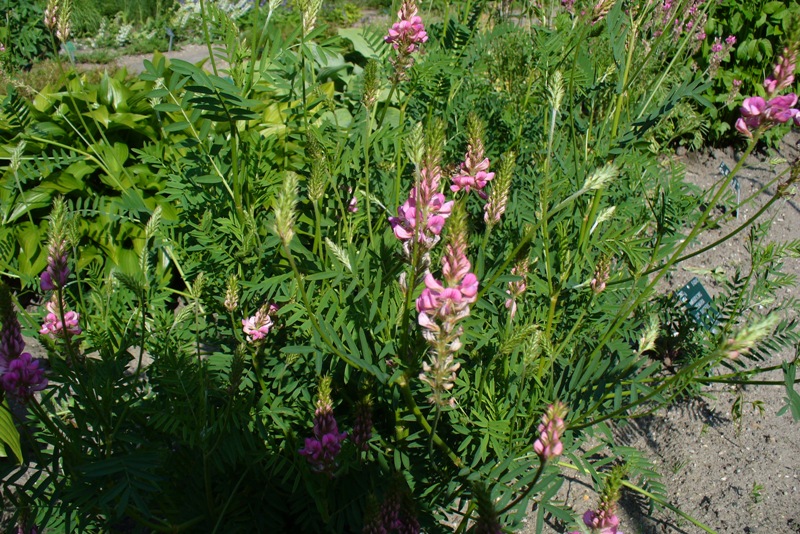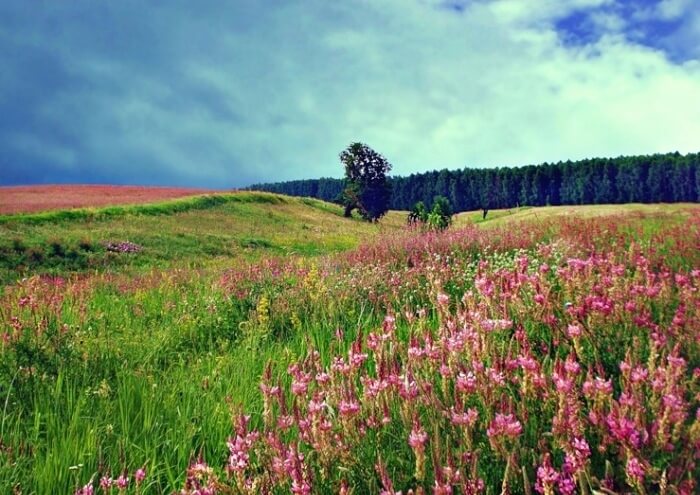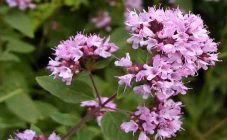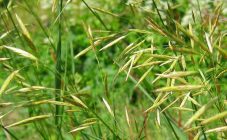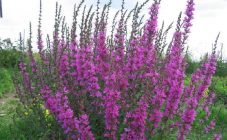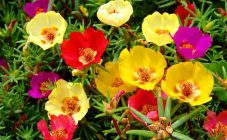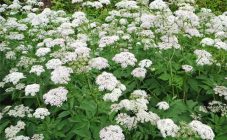Content:
Sainfoin grass used to be used as feed raw materials for animals in Europe and Asia. Gradually, the perennial plant was supplanted by other tenacious grasses, for example, alfalfa, but sainfoin remained a popular type of food in fairly arid regions. The ease of maintenance, flexibility in use and the excellent nutrient composition of sainfoin deserve the attention of many farmers looking for new types of feed for their farms.
Description of culture
Sainfoin is a herbaceous perennial that can reach a height of 70 cm. It belongs to the large family of legumes. The plant has a stalk root, stands out against the background of other herbs with a straight stem with a branchy top. Its foliage is quite complex in shape, each of the leaves seems to be assembled from 25 small leaves. The striking perennial flowers are collected in large spikelets. Shades of inflorescences are different: from yellow to light pink. Spikelets can reach up to 20 cm. This is the general characteristic of the species used as green manure.
As a result of fruiting, the perennial bean produces fruits in the form of a bean, containing a sufficient amount of protein, which has an external resemblance to beans. The surface of the yellow-green fruit is smooth, without visible roughness.
Abundant flowering of a perennial begins from the second year after the direct planting of the plant. The life of each flower does not last long - up to 24 hours, in some cases no more than 12 hours.
In common people, this perennial is called "hare peas" because of its non-standard appearance. Unassuming sainfoin is a true storehouse of healing substances and excellent honey plant.
The resulting product is highly appreciated by farmers. The light amber product harvested from this flower is practically not candied.
The perennial grows comfortably in flowering meadows, spacious pastures, near water bodies, on forest edges. In its natural habitat, the unpretentious perennial grows in southern Europe, in northern Asia, in western and central Asia.
Varieties
Experts have identified up to 80 species of perennial, the most popular among them:
- Transcaucasian;
- Sandy;
- Sowing;
- A rare sight of Vasilchenko.
They all find their application in agriculture. The Transcaucasian type of sainfoin has the highest yield indicators. It has increased resistance to sultry drought and severe frost, quickly recovers after mowing. You can get up to 3 cuttings per season. This variety is cultivated in the North Caucasus and Transcaucasia.
Reproduction methods
The sainfoin herb, the description of which was given above, can be spread by seeds, it is sown in the form of siderata. Excellent predecessors of perennials are potatoes, corn, beets. It is not recommended to sow perennials after sunflower and Sudanese grass.
Sowing features
For sowing green manure crops in the fall, a site is carefully prepared. After the soil warms up to 7 degrees, sowing begins.If sowing is carried out later, then there is a risk of not getting the proper amount of the crop. Before the farmer is going to plant green manure in his area, the soil layer is leveled, because the variety prefers to grow on level ground.
Healing properties
Natural infusions of perennials have a beneficial effect on the human body. In medicine, decoctions of sainfoin are used in the following cases:
- Lack of sex drive in women;
- Climacteric uterine bleeding;
- Menstrual irregularities;
- Algodismenorrhea.
For medical purposes, with the help of these life-giving compounds, the following disorders are treated in men:
- Sexual dysfunctions;
- Inflammatory processes and swelling in men of a benign nature;
- Dysfunctions in the production of male hormones testosterone and androgen.
Healing hare peas have also found their application in the following pathological conditions:
- for prophylactic purposes with identified urolithiasis;
- in order to prevent diagnosed diabetes mellitus;
- in the role of complex therapy for hypotensive patients;
- neurasthenics;
- during general weakness of the body.
Diseases and pests
A perennial is often exposed to various plant ailments. Unassuming sainfoin is susceptible to rust, ascochitosis, powdery mildew. During the fight against various ailments, similar measures are taken, as in the protection of the cultivated areas of alfalfa. If a lesion is detected with ascochitosis, ramulariasis, the sowing is sprayed with Bordeaux liquid. Against the defeat of powdery mildew and rust, young animals are sprayed with a ready-made suspension of colloidal sulfur.
Despite all the unpretentiousness of the sainfoin, it is attacked by more than 60 types of pests, 30 of them are capable of causing significant damage to the plantation. The greatest danger to crops is the bud apion, the young larvae of which eat the juicy cavity in the stem under the bud. After his attack, the inflorescences with buds die off together. Slugs and thrips also attack sainfoin plantations.
Collection and procurement of raw materials
Perennial among other legumes is distinguished by early flowering. The first time they start mowing sainfoin hay 10 days earlier. The optimal mowing time is the beginning of plant budding. At this time, the perennial is distinguished by a high content of life-giving substances. The first mowing of the grass mixture is carried out when all the seedlings release their buds. The second bevel of the fodder product is made no later than a month before the perennial leaves for winter.
At the same time, a cutting height of 7-8 cm is observed. Low mowing slows down the regrowth of young shoots, many living buds are lost. When collecting seeds, farmers receive the maximum yield from the first cut of the grass mixture. In areas cleared of weeds, green manure is sown on seeds with a distance of 30 cm.You can also sow herbs on seeds in a wide-row method, keeping the distance between rows at 45-60 cm.
Perennial roots and foliage, inflorescences and leaves are used in folk recipes. Harvesting of the ground part is carried out during the period of active flowering of the species. Gently cut the roots, mow the stems, chop, dry the leaves in a well-ventilated area. In the period of autumn coolness, tap roots are harvested, dried similarly to the ground part. The prepared product is stored for 2 years.
